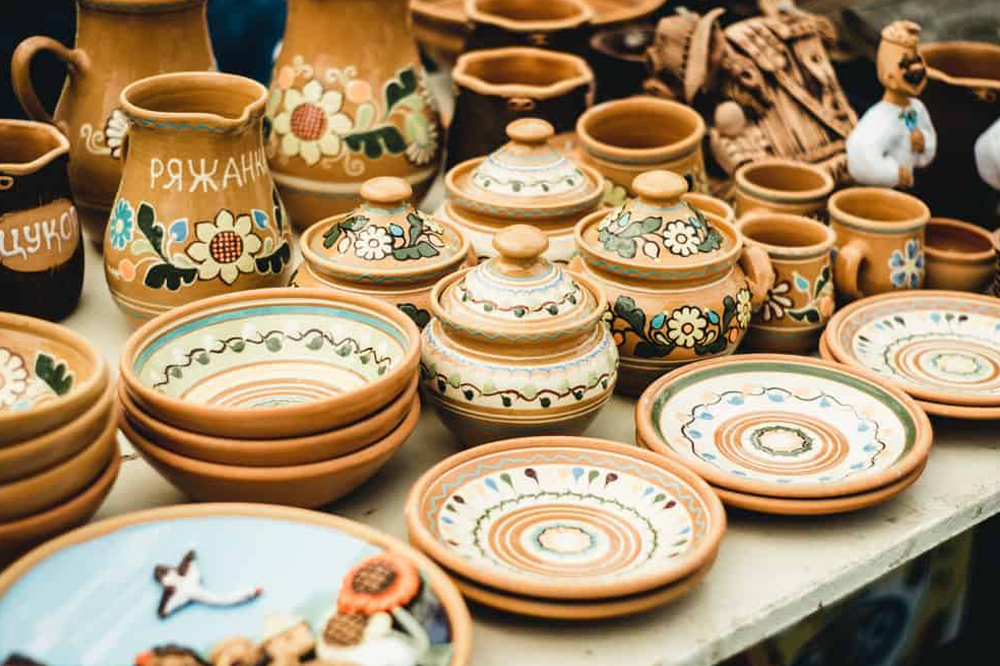Handicrafts
Arash Company has collected these valuable works of art by researching the ancient history of Iran in the production of handicrafts and the diversity of different locations in this field. This action is possible with bilateral cooperation between the manufacturer and Arash Company, which is a big step towards achieving international trade goals. The efforts of this collection have been in the field of collecting quality and original handicraft products and cultural and artistic products, offering packages with creative and different ideas, supporting handmade products and opening a new horizon in the export market. Among the handicrafts offered by this company, the traditional products such as hand weaving ones (kilim, jajim and carpet), copper and silver utensils, silver tapestry, pottery and ceramics, mosaics and enamels, carpentry, all kinds of traditional needlework, engraving, producing various leather products and making all kinds of jewelry can be mentioned..



Needlework
Needlework is the art of adorning the surface of the fabric with colorful threads, using the hand, needle and creative mind of the sewer. Baloch needle embroidery (Soochen Dooch) or Baloch embroidery is a kind of traditional embroidery taken from the taste and talent of needlework artists of Sistan and Baluchestan province. An important feature of Baloch needlework is the geometric nature of the designs, elegance and types of sewing compared to the other types of needlework. Most of the geometric shapes that can be seen in these types of needlework are triangles, rhombuses and rectangles, the sides of which can be sewn with a serrated or straight face. This type of needlework is sewn with all kinds of zigzags and small and large knits and all kinds of available sewing skills.
It should be mentioned that from the examples of needlework, complementary products such as: bags, all kinds of accessories, including ornaments and ties, glasses, keychains, napkins, pants, coats, fabrics, shoes, belts, boots, shawls, blouses, jackets, album covers, photo frames, etc.
copper dishes
Copper dishes are one of the oldest dishes for cooking and catering. In addition to their beautiful, modern and unique appearance, these dishes also have other properties. Copper dishes are made by two methods: machine (pressing process) and handmade method (hammering). The difference is that in the machine method, the shaping of the dishes is done by pressing and bending machines and it is decorated by thin and parallel lines. But in the hammering method, the dishes are formed in the heat with the art of the master craftsman and a special hammer for this work, and the place of the hammer can be seen in the place of these unique dishes. In addition to mentioned above, these containers differ in price, thickness and performance

Copper dishes are divided into two general categories for use. Utensils used for cooking and utensils that have a decorative aspect. Pots, pans, plates, spoons and forks are in this category. Decorative and modern copper utensils are another type of use of these utensils that have attracted the attention of countless people due to their decorative nature. These products are usually born in combination with another art and fall into the category of handicrafts with copper. Among the types of these arts, we can mention copper utensils, turquoise stamping on copper, copper mosaic paintings, inlay on copper

Give Bafi
Give-bafi (a kind of weaving) is one of the handicrafts of Senejan village in Arak, the originality and quality of which have been approved by UNESCO for two periods in 2010 and 2012. This traditional Iranian shoe, which the upper part of it is woven with cotton fibers and the sole of which is also made of leather, is suitable for all seasons, especially the warm seasons. This product has many customers in the country, especially from Tabriz and foreign customers in the cities of Baghdad, Samarkand, Aleppo and Cairo. Of course, at present, customers from the Persian Gulf countries and even countries such as Germany and the United States are the major buyers of Giveh, and every year a major part of the production of this product is exported to the mentioned places. This industry is also known as weaving in Kurdistan and is intertwined with the life and culture of the Kurdish people.
Among the types of these legs, we can mention Ajideh or Ajdeh, leather, lathe, rubber, silk and Kurdish men.
Pottery
One of the oldest human tools is pottery. Pottery has played a special role in the culture and life of Iranians since ancient times. Pottery is based on historical studies, it was shown that early humans, after stone and wooden dishes, used pottery. In fact, before the advent of glass, pottery was the most common human masterpiece. It is mostly used for decoration but it is also common to use glazed pottery for cooking and serving food

